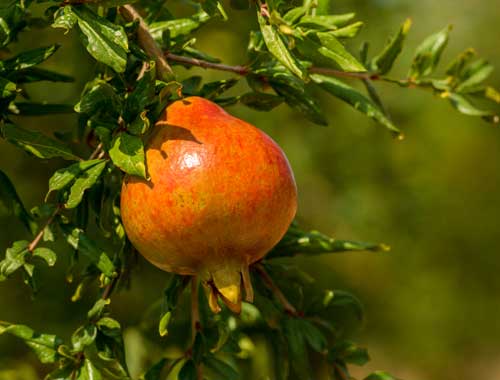History of the pomegranate

… a few words for the history of the pomegranate
The pomegranate originated in Persia and its botanical name is Punica granatum, which is translated as ‘ an apple with many fruits – seeds ‘ . It is one of the three “blessed fruits” of Buddhism, and the ancient Egyptians buried their dead with it. It was used as a decorative element in the temple of Solomon, on the mantles of the priests and it was also mentioned in the Old Testament. It is witnessed in many ancient Greek texts and it was clearly distinguished in sour and sweet pomegranate (something which also occurred in the Greek countryside until a few decades ago).
It is the fruit that Pluto gave to Persephone and the emblem of the Eleusinian Mysteries.
In Modern Greek tradition, is a symbol of fertility and eternity. This is the reason why Greeks tend to use it at weddings and at New Year’s Eve. Initiate into the secrets of the pomegranate and discover why so many cultures and religions have the pomegranate as a symbol of fertility and good luck.

One of the first trees that are grown
The pomegranate is one of the first fruit crops. The pomegranate tree is a small deciduous tree with glossy leaves and orange-yellow flowers, though sometimes resembles to a bush. Its fruit are round, red or yellow, depending on the variety and filled with seeds. It is resistant to heat, drought and lack of care and is easily adapted to different soils.
